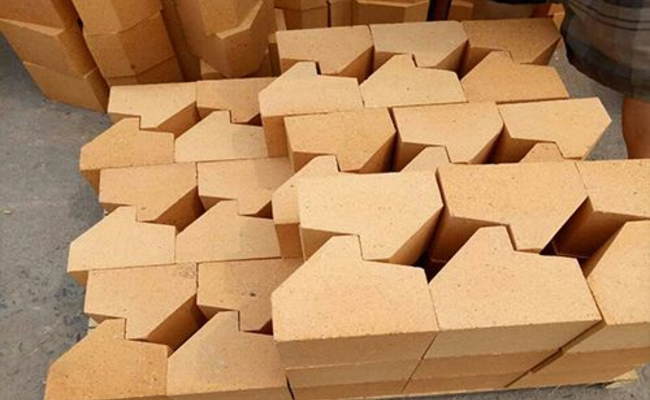
Keramikpellets sind kugelförmige poröse Materialien aus niedrigem Schmelzpunkt Ton, Schiefer, Flugasche, oder Kohle Gang als Rohstoffe durch Kalzinierung
Der Hauptzweck der isolierenden feuerfestigen Materialien aus hitzebeständigen feuerfestigen Wärmeableitungen in Hochtemperaturöfen reduzieren, Reduzieren Sie das Selbstgewicht des Ofens, und reduzieren die Außentemperatur des Ofens. Isolierrefraktionen sind in der Position von Hochtemperaturöfen von entscheidender, gleichzeitig Energie einsparen und die Umwelt schützen.
Hohlkugeln werden hergestellt, indem Rohstoffe wie Aluminiumoxid oder Zirkonia in flüssige Form geschmolzen und die hochtemperaturgeschmolzene Flüssigkeit in kleine Tröpfchen mit Druckluft blasen, Bildung von Hohlkugeln unter der Wirkung von Oberflächenspannung und Zentrifugalkraft. Gemeinsame Materialien umfassen Alumina Hohlkugeln, Zirkonia Hohlkugeln, etc. Diese Materialien werden in feuerfestem Material weit verbreitet und können zur Herstellung verwendet werden Hohlkugel Ziegel und Isolations -Gusselbetriebe. Wegen der hohen Reinheit, Niedriger Verunreinigungsgehalt, hohe Festigkeit, und niedrige thermische Leitfähigkeit dieser materiellen hohlen Kugeln, Sie werden im Allgemeinen bei der Herstellung von hochgradigen Isolationsmaterialien mit einer guten Leistung mit hoher Temperatur und Isolationsleistung verwendet, und kann auch in direktem Kontakt mit Flamme stehen.
Driftenperlen sind hohle Mikrokügelchen mit Flugasche, die auf der Wasseroberfläche schweben können, getrennt von der Kohle -Flugasche, die aus dem brennenden pulverisierten Kohleofen entlassen wurde, Meistens nicht weiß. Die chemische Zusammensetzung von Driftperlen schwankt stark, das hängt eng mit der Zusammensetzung pulverisierter Kohle zusammen. Die Partikelgröße liegt normalerweise zwischen 20 ~ 250 μm, Die spezifische Oberfläche beträgt 3000 ~ 3200cm2/g, und die Schüttdichte beträgt im Allgemeinen 250 ~ 400 kg/m3. Drift -Perlen werden im Allgemeinen in Isolationsfestblättern verwendet, und der Zweck der Einführung besteht hauptsächlich darin, die Festigkeit zu verbessern und die thermische Leitfähigkeit von Isolationsfestblöcken aufgrund ihrer größeren Zylinderdruckfestigkeit und einer geringeren thermischen Leitfähigkeit zu verringern.
Die Kieselgymse ist eine Art silikatischer Sedimentgestein mit einem biologischen Ursprung. Die Größe der Kieselalgenschale beträgt ungefähr 5-400 μm, eine große Anzahl winziger Poren enthält, und die Porosität erreicht mehr als 80%, Es hat also eine ausgezeichnete Leistung der Wärmeisolierung. Schüttdichte ist ein wichtiges Kriterium, um die Qualität der Kieselgurde erd zu messen, Je kleiner die Schüttdichte, desto besser die Qualität. Bei der Herstellung von Kieselgur -Erdfliesen wird üblich, die gute thermische Isolationseigenschaften haben, Die Verwendungstemperatur kann jedoch nicht höher als 900 ℃ sein, ansonsten, Die Siliciumdioxid in der Kieselgur -Erde wird in quadratische Quarz umgewandelt und verliert ihre thermischen Isolationseigenschaften. Zusätzlich, Diatomit wird auch als Füllstoff in unregelmäßigen Materialien verwendet.
Perlit ist saure Lava aus vulkanischen Ausbrüchen, das erweitert sich bei 1.180-1350 ℃, Bildung erweiterter Perlite, die reich an geschlossenen und offenen Poren sind, mit einer Expansion Vielfachen von 7-30 Zeiten oder mehr. Erweiterter Perlite ist klein, allgemein, Zwischen 40-200 kg/m3, Die thermische Leitfähigkeit ist sehr niedrig, Die sichere Verwendungstemperatur ist unten 800 ℃, und hat ein gewisses Maß an feuerfestem Eigenschaften. daher, Erweiterter Perlite wird in verwendet Eine große Anzahl von isolierenden feuerfestem Material, Die Menge in den Isolationsfestblagen ist sehr groß, hauptsächlich um die thermische Leitfähigkeit von Isolationsmaterialien zu verringern, Während der Block erweiterte Perlite eine bestimmte Stärke liefern kann, in der petrochemischen Branchenöder und der Rohrisolierung häufig verwendet. Zusätzlich, Verwenden Sie auch erweiterte Perlite, um einige stereotype Produkte herzustellen.
Keramikpellets sind kugelförmige poröse Materialien aus niedrigem Schmelzpunkt Ton, Schiefer, Flugasche, oder Kohle Gang als Rohstoffe durch Kalzinierung. Es hat eine glatte und harte Oberfläche, Wabenform im Inneren, geringe Wärmeleitfähigkeit, und hohe Festigkeit, Es ist ein qualitativ hochwertiger künstlicher leichter Rohstoff, hauptsächlich als Aggregat in thermischen Isolierung und feuerfestem Gussguss verwendet.
Vermiculit ist ein typisches, geschichtter Silikatmineral aus schwarzem Glimmer, Goldmark, und andere Mineralien, und seine chemische Zusammensetzung schwankt weit, hauptsächlich abhängig von der Zusammensetzung des Glimmers. Vermiculit hat das Merkmal des Erhitzens und der Erweiterung, Dadurch wird es auf dem Gebiet der feuerfesten Materialien verwendet. Vermiculite beginnt sich im Volumen zu erweitern, wenn er auf 200 ° C erhitzt wird, und das Volumengewicht nimmt dazwischen ab 600 Und 900 kg/m3, und das Volumengewicht kann auf reduziert werden 100-130 kg/m nach vollständiger Kauterisierung, und die thermische Leitfähigkeit ist auch sehr klein, gute Wärmedämmeigenschaften besitzen. Vermiculit kann bei einer maximalen Temperatur von 1100 ° C verwendet werden, So kann es in Form von Granulat oder feinem Pulver eingeführt und in Vermiculit -Ziegel oder thermische Isoliergastelchen in Teilen mit etwas höheren Temperaturen verwendet werden.
Seit Oktober, Die Preise für Aluminiumoxid sind weiter gestiegen, and China's largest bauxite importer - a…
Erste, Ziegel mit hohem Tonerdegehalt: The Leader In High Temperature Refractories As a leader in high-temperature…
The application of refractory bricks in the kiln immediately endangers the operation rate of the…
Analysis Of The Causes Of Common Quality Problems In Tunnel Kiln Construction And Measures To…
Corundum quality refractory castables are made from corundum to the new jade refractory insulation material…
Analyse feuerfester Aluminium-Silizium-Rohstoffe Prof. Li Yong of the University of Science and…